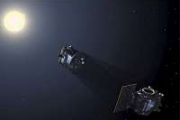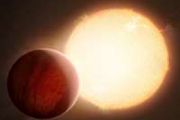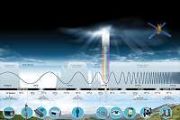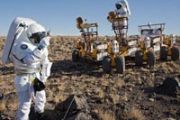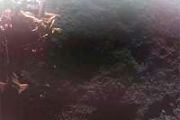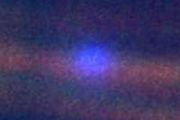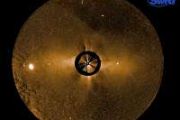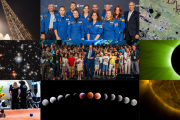
Copernical Team
Why Students from Around the World Choose to Study Space Technology Abroad
 The space technology industry is an impressive and rapidly growing sector in the world. With the potential for satellite communications, spacecraft design, space exploration, and astrophysics to expand indefinitely, students from Canada, the UK, India, Brazil, and others also know that studying abroad can offer advantages that cannot be obtained in their home countries.
h2>Access to Advan
The space technology industry is an impressive and rapidly growing sector in the world. With the potential for satellite communications, spacecraft design, space exploration, and astrophysics to expand indefinitely, students from Canada, the UK, India, Brazil, and others also know that studying abroad can offer advantages that cannot be obtained in their home countries.
h2>Access to Advan Precision CNC for High-Speed Aerospace Impellers
 In aerospace engineering, impellers play an important role in high-performance propulsion and fluid systems, which have complicated geometry-usually with twisted blades, variable chord lengths and complex hub profiles.
In aerospace engineering, impellers play an important role in high-performance propulsion and fluid systems, which have complicated geometry-usually with twisted blades, variable chord lengths and complex hub profiles. SpaceX set to launch Indonesian communication satellite after scrub
 SpaceX is set to launch an Indonesian communication satellite after unfavorable weather scrubbed the initial flight on Tuesday night.
The new launch window is 8:01 p.m. EDT - 9:57 p.m. EDT for the launch from Cape Canaveral Space Force Station after Monday night's poor weather didn't allow a liftoff.
Tuesday night's forecast is a 15% favorable chance during the window and it incr
SpaceX is set to launch an Indonesian communication satellite after unfavorable weather scrubbed the initial flight on Tuesday night.
The new launch window is 8:01 p.m. EDT - 9:57 p.m. EDT for the launch from Cape Canaveral Space Force Station after Monday night's poor weather didn't allow a liftoff.
Tuesday night's forecast is a 15% favorable chance during the window and it incr MSBAI wins DoD contract to accelerate OrbitGuard for space situational awarenes
 MSBAI (Microsurgeonbot Inc.) has received a Direct-to-Phase II SBIR contract worth $1.2 million to advance its OrbitGuard hybrid-intelligence system for space domain awareness. The Department of Defense CDAO originated the opportunity, with selection by the Office of the Secretary of Defense and execution by the Air Force Digital Transformation Office. The 18-month effort positions OrbitGuard fo
MSBAI (Microsurgeonbot Inc.) has received a Direct-to-Phase II SBIR contract worth $1.2 million to advance its OrbitGuard hybrid-intelligence system for space domain awareness. The Department of Defense CDAO originated the opportunity, with selection by the Office of the Secretary of Defense and execution by the Air Force Digital Transformation Office. The 18-month effort positions OrbitGuard fo New AI tool predicts vision loss risk in astronauts—before launch
This request seems a bit unusual, so we need to confirm that you're human. Please press and hold the button until it turns completely green. Thank you for your cooperation!
Press and hold the button
If you believe this is an error, please contact our support team.
185.132.36.159 : 88bc1bbe-f29a-482c-9833-3519c9c2
One extremophile eats Martian dirt, survives in space and can create oxygen for colonies
This request seems a bit unusual, so we need to confirm that you're human. Please press and hold the button until it turns completely green. Thank you for your cooperation!
Press and hold the button
If you believe this is an error, please contact our support team.
185.132.36.159 : 6fec16b5-60f4-4f30-9930-375688c2
Life after microgravity: Astronauts reflect on post-flight recovery
This request seems a bit unusual, so we need to confirm that you're human. Please press and hold the button until it turns completely green. Thank you for your cooperation!
Press and hold the button
If you believe this is an error, please contact our support team.
185.132.36.159 : 3992c2f8-35f2-4119-9277-6190bfff
Sunset SpaceX launch could make for unique show if weather allows
This request seems a bit unusual, so we need to confirm that you're human. Please press and hold the button until it turns completely green. Thank you for your cooperation!
Press and hold the button
If you believe this is an error, please contact our support team.
185.132.36.159 : e69e12a0-b358-4280-8f1d-e8acafff
ESA observations of interstellar comet 3I/ATLAS

The European Space Agency (ESA) reacted promptly to the discovery of comet 3I/ATLAS on 1 July 2025. Soon after they were alerted to its existence by automated detection systems, ESA astronomers began using ground-based telescopes in Hawaii, Chile, and Australia to monitor its progress.
Since then, the comet has been observed by space telescopes close to Earth, including the NASA/ESA Hubble Space Telescope and the NASA/ESA/CSA James Webb Space Telescope.
In the coming months, ESA will turn interplanetary voyagers such as Mars Express, ExoMars Trace Gas Orbiter and the Jupiter Icy Moons Explorer (Juice) in the direction of the comet to make further
Galileo daughter mission named Celeste to strengthen navigation resilience
 Following the announcement of the upcoming launch of its first satellites, ESA has officially named the Low Earth Orbit Positioning Navigation Timing (LEO-PNT) mission Celeste. The new program will test how a low Earth orbit layer of satellites can reinforce the resilience of Europe's Galileo system and extend its capabilities.
Galileo and its sister augmentation service EGNOS have become
Following the announcement of the upcoming launch of its first satellites, ESA has officially named the Low Earth Orbit Positioning Navigation Timing (LEO-PNT) mission Celeste. The new program will test how a low Earth orbit layer of satellites can reinforce the resilience of Europe's Galileo system and extend its capabilities.
Galileo and its sister augmentation service EGNOS have become 









